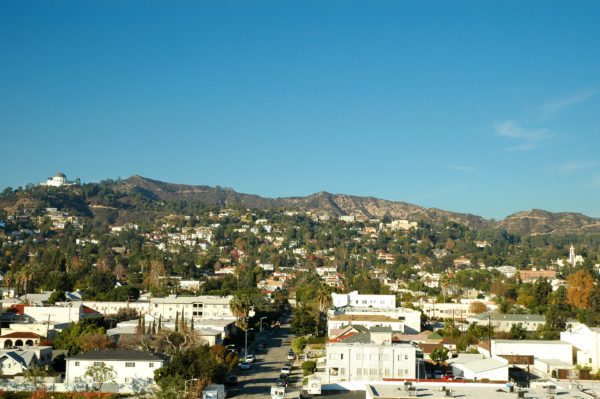In another effort to speed the processing of cargo and eliminate a backlog of ships trying to deliver merchandise, the Los Angeles City Council Wednesday authorized the Port of Los Angeles to fine companies whose containers linger at the marine terminals.
Councilman Joe Buscaino, who represents neighborhoods around the port, introduced the motion to approve authorization in advance of the Harbor Commission considering the policy change on Friday. Typically, the City Council gives final approval after receiving recommendations from the commission, but the council took action beforehand so the fines can go into effect on Nov. 1.
The fines will begin at $100 per container, increasing by $100 per container each day. The Port of Long Beach is planning to impose the same fines.
According to a joint statement on Monday from the ports, containers set to be transported by truck will incur fines if they remain at the port for nine days or more. For rail containers, fines will be assessed if they are at the port for three days or more.
“In my communities, particularly in Wilmington, the impacts are creating a hazard to the people that live there,” Buscaino said before Wednesday’s vote. “Containers are stacked dramatically high and dangerously high, trucks parked with containers in front of people’s driveways, never ending truck traffic in residential neighborhoods. In fact, over 400 citations were given by (the) Port (police department) in the month of September.”
President Joe Biden recently announced an agreement for both ports to operate around the clock to help speed the movement of cargo. Last week, Long Beach eased restrictions on the height of stacked cargo containers in hopes of allowing more container storage at the port and moving ships out more quickly.
Buscaino said the switch to 24/7 operations wasn’t going to be enough.
“We’re seeing more containers in residential areas because they have nowhere else to go. We have seen a container that fell onto another vehicle on Anaheim Street in Wilmington, and that’s why we have to take emergency measures to ensure that all hands are on deck to address this crisis,” Buscaino said.
According to the ports, prior to the COVID-19 pandemic, containers for local delivery sat at marine terminals for less than four days, while containers set to be carried by trains remained for less than two days. But those numbers have “increased significantly, making it difficult to clear cargo off the terminals and bring in ships at anchor,” according to the ports.
“We must expedite the movement of cargo through the ports to work down the number of ships at anchor,” Port of Los Angeles Executive Director Gene Seroka said Monday while announcing the fines. “… If we can clear this idling cargo, we’ll have much more space on our terminals to accept empties, handle exports, and improve fluidity for the wide range of cargo owners who utilize our ports.”
Port of Long Beach Executive Director Mario Cordero said “immediate action” is needed in response to the “escalating backlog of ships off the coat.”
“The terminals are running out of space, and this will make room for the containers sitting on those ships at anchor,” he said.
The council’s motion also authorized the Board of Harbor Commission’s pending approval of a $2.5 million change order to the construction contract with Manson Construction Company to allow for temporary storage of containers on 10 acres of vacant land on Terminal Island.







